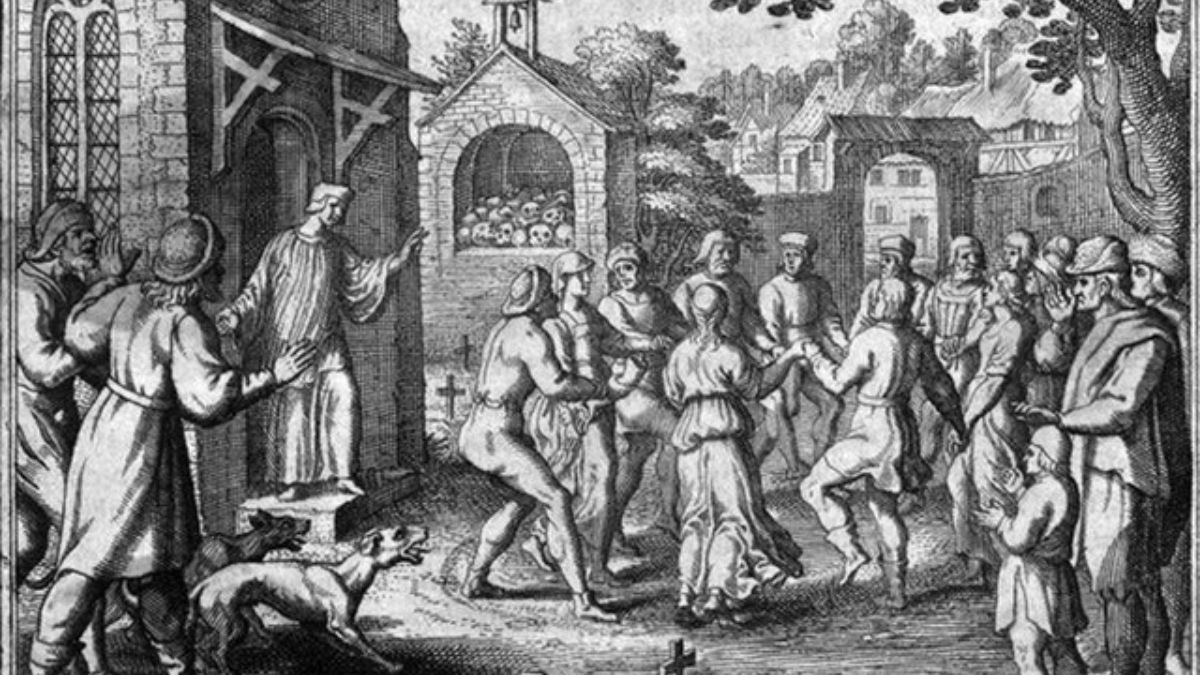The Dancing Plague of 1518 stands as one of history’s most bizarre and inexplicable events, where a frenzy of uncontrollable dancing gripped the city of Strasbourg. Here are the top 10 facts that unravel the peculiar story behind this puzzling occurrence:
Mysterious Outbreak
In July 1518, a woman named Frau Troffea in Strasbourg, then part of the Holy Roman Empire, began dancing in the streets without any apparent cause. This unusual behavior persisted and soon spread, with others joining in the compulsive dancing.
Rapid Spread
Within days, the dancing “epidemic” escalated, leading to an inexplicable contagion as more and more individuals in Strasbourg succumbed to the compulsion to dance. The number of dancers reportedly reached several hundred, leading to a state of hysteria.
Uncontrollable Dancing
Witnesses described the affected individuals as unable to cease their dancing, despite exhaustion, dehydration, and physical distress. Some dancers continued for days or even weeks, collapsing from fatigue and injuries, yet compelled to resume dancing.
Medical and Religious Theories
At the time, explanations for the Dancing Plague varied widely. Physicians and clergy proposed theories attributing the phenomenon to supernatural causes, such as divine punishment or possession by demons, while others suggested it was a result of overheated blood.
Social Response
As the dancing epidemic persisted, authorities and civic leaders attempted various measures to halt the phenomenon. Some strategies included setting up stages and musicians to encourage the dancing in the hope that the dancers would exhaust themselves and recover.

Medical Curiosity
The Dancing Plague of 1518 attracted the attention of medical professionals and scholars, prompting investigations and attempts to comprehend the mysterious event. However, the precise cause of the uncontrollable dancing remained elusive.
Psychological Phenomenon
In modern times, retrospective analysis by psychologists and historians has led to theories suggesting that the Dancing Plague might have been a case of mass hysteria, possibly triggered by stress, cultural beliefs, or social pressures of the time.
Historical Context
Strasbourg in the 16th century faced several socio-economic challenges, including famine, disease, and social unrest. These adversities may have contributed to a heightened psychological state within the population, potentially triggering the bizarre dancing behavior.
Subsiding of the Epidemic
The Dancing Plague gradually subsided by September 1518, with the affected individuals recovering or succumbing to exhaustion and its associated complications. The event left an indelible mark on the city and became a subject of fascination for centuries.
Legacy and Interpretations
The Dancing Plague of 1518 remains a historical enigma, sparking numerous interpretations and cultural references. It serves as a reminder of the complexities of human behavior, the influence of social and environmental factors, and the mysteries that history occasionally presents.
The Dancing Plague of 1518 stands as an inexplicable and intriguing episode in history. Its unusual nature continues to captivate the curiosity of scholars, offering a glimpse into the complexities of the human psyche and the potential for collective behavior to spiral into inexplicable phenomena.
While the exact cause of this dancing epidemic remains uncertain, its legacy endures as a testament to the unpredictability and mysteries that occasionally emerge in the annals of history.










